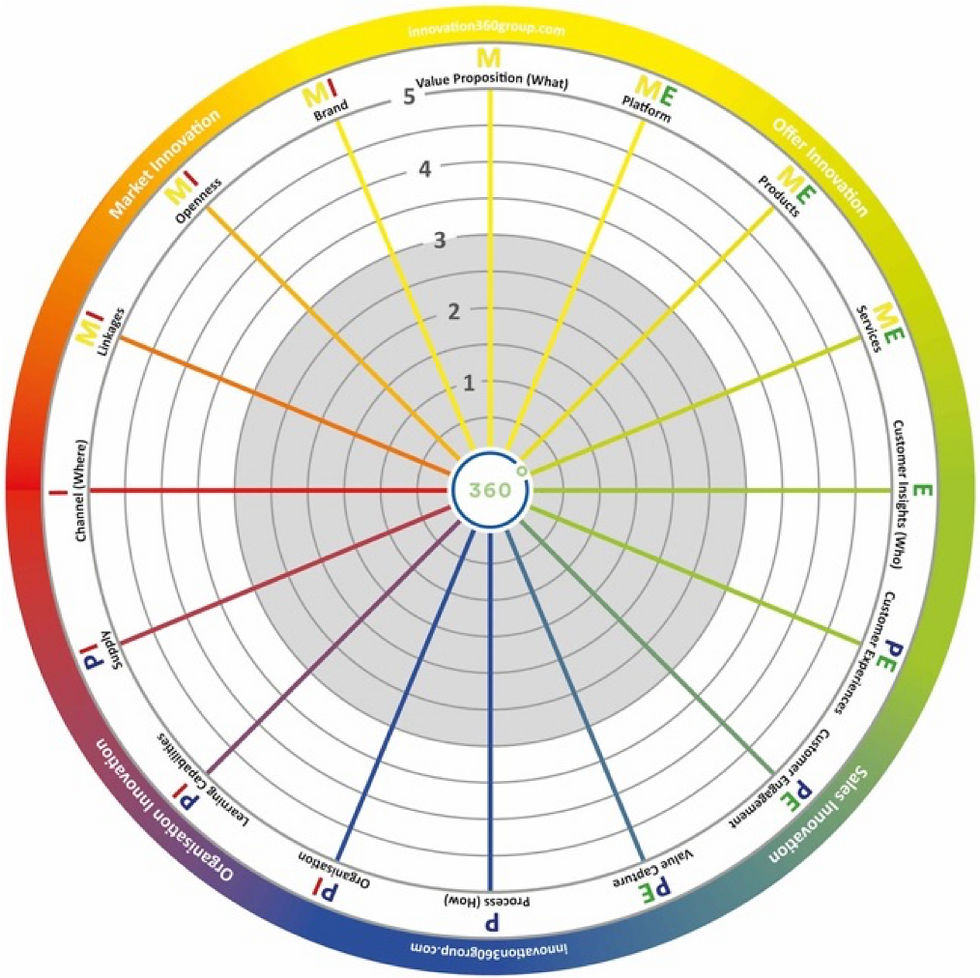Radical innovation – A study of small and large radical innovators
- krishnan62
- Feb 14, 2020
- 3 min read

A powerful way to analyze the innovation capability of an organization is to use the Innovation 360 framework. This framework was described by Magnus et al in the book “How to Assess and Measure Business Innovation” (Magnus Penker, Peter Junermark, and Sten Jacobson. “How to Assess and Measure Business Innovation, 2017). In this framework, they have identified 66 underlying innovation capabilities and mapped them to 16 aspects (lenses) shown in the wheel of innovation (see figure). The Wheel of Innovation is a patented tool for mapping out and analyzing any organization's capabilities for managing innovation.

InnoSurvey ® database, built by Innovation360 based on this framework, now holds data from 5000+ companies in 105 countries across the world. The data provides valuable insights on how organizations manage innovation and these insights, in turn, provide organizations guidance on how they themselves can prepare for their innovation journey.
One of the things I wanted to understand was the difference in the approaches of large organizations and smaller organizations when it comes to radical innovation. To do this analysis I chose organizations that are small (less than 500 people) versus organizations that are large (> 500 people). In both cases, we removed data from organizations that were not innovators and selected those who believed they were radical innovators. As a benchmark, we chose the top quartile innovator data.
Surprisingly, the capability assessment showed that smaller organizations lag behind larger organizations, as shown in the figure below.

Interestingly, when we looked at the innovation strategy adopted; the type of innovation, the leadership styles and how they chose to innovate, there is very little difference between the smaller and larger radical innovators

Very clearly, from a point of view of why to innovate and how to innovate, both small and large radical innovators behave very similarly. However, from a capability point of view, the larger organizations appear to be better prepared for innovation as is shown in the 360-degree capability assessment.
When we dig deeper into capabilities a few striking differences are seen. Firstly, we find that there is a difference in people personas between smaller and larger organizations

Smaller radical innovators are missing one of the key ingredients for innovation; anthropologists. The anthropologists are learning personas and Kelly defines them as “the person who ventures into the field to observe how people interact with products, services, and experiences in order to come up with new innovations”. (Kelley, T. and Littman, J. (2005). The ten faces of innovation.)
Not just smaller radical innovators, even large innovators, seem to be not good at anthropology, something the top innovators are very good at. The difference between the top innovators and the others seems to be the ability to use field validated customer insights while innovating. Are smaller firms being driven by their own ideas and vision than by actual customer needs?
(Interestingly, smaller firms seem to be much better at empathy than the larger firms; something that appears very logical.)
We looked at a second factor that stands out; the innovation process. When we look at the way these organizations manage their innovation process, there is further support for the theory that smaller organizations aren’t being structured enough with innovation.

While the smaller organizations are as good as the larger radical innovators when it comes to ideation, they are distinctly lacking when it comes to the selection of innovation ideas. Again, are they biased by their own opinions?
We believe that smaller organizations would be more successful at innovation if they become more structured with their innovation management system.
Krishnan Naganathan
Krishnan is a consultant with more than 25 years of experience. His purpose is to help India and it's entrepreneurs be global leaders in innovation








Comments